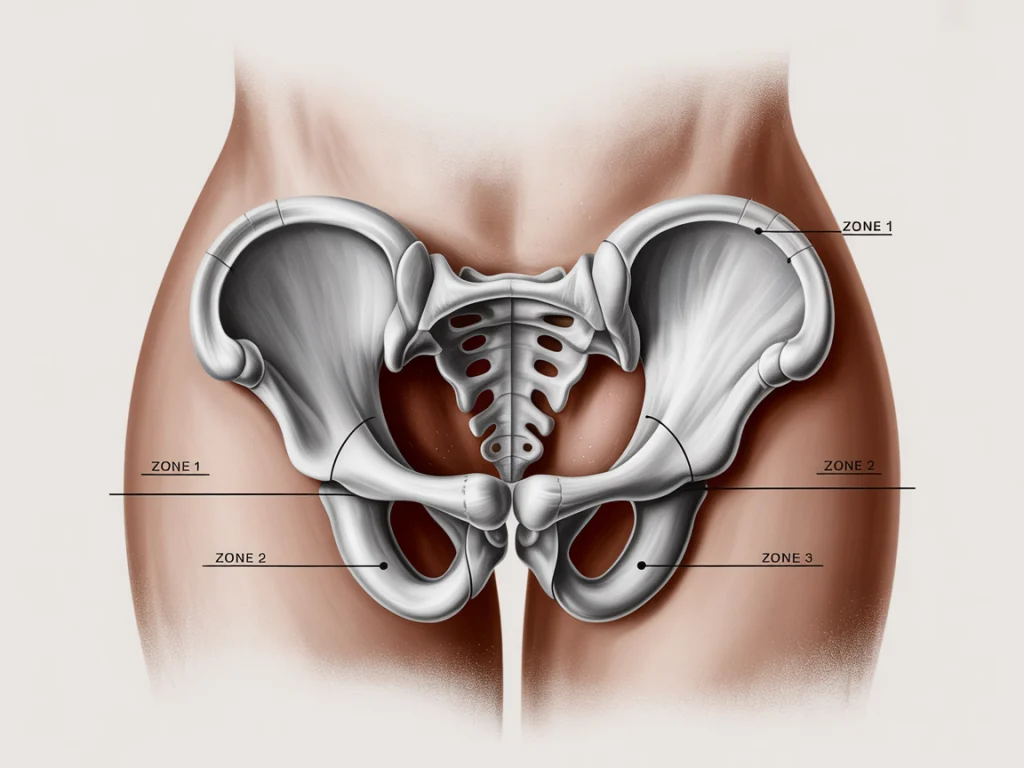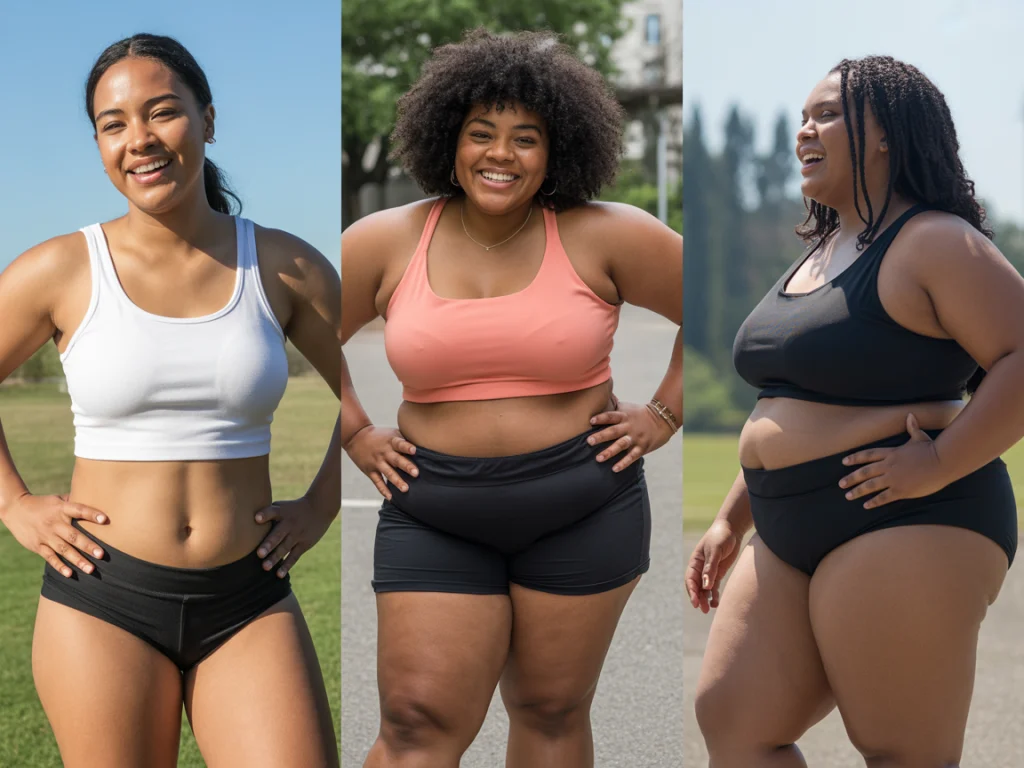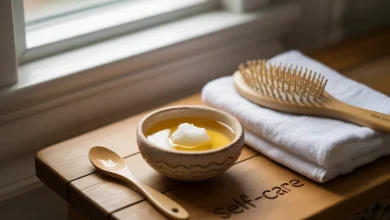How to Get Rid of Hip Dips in 2025: Real Results Without the Hype
Did you know that over 70% of women have a natural hip dip? The little dips you see behind your hip bones and in front of your thighs should be considered normal, natural body features. Yet social media has somehow convinced many of us that they’re something to “fix. You are among the many people who have researched methods to minimize these natural body features.
The fitness industry and Instagram influencers often create a sense of insecurity about hip dips (also known as violin hips or shelf hips), even though they are completely normal. The good news? You cannot completely remove these anatomical structures from the bones, but you can effectively minimize their visibility without undergoing harmful medical procedures.
The following guide reveals information about hip dips and offers several solutions for reducing their visibility with exercises and style changes, as well as strategies for building body confidence and posture performance. The basic structure of your bones sets the foundation, but your fat distribution along with the development of your muscles controls the extent of their visibility.
Who will find this article helpful:
- Those looking for safe, natural ways to reduce the appearance of hip dips
- People seeking alternatives to surgery
- Home exercise enthusiasts looking for targeted exercises
- Anyone struggling with body image related to hip contours
What are hip dips and why do they occur?
In some people, a natural inward curve known as a hip dip develops between the hip bones (iliac crest) and the top of the thighs. People who have a hip dip have an angular body shape instead of the smooth hourglass figure often promoted on social media.
The basic structure of your pelvis and femur (thigh bone) creates these dips in your body. According to most certified fitness professionals, muscular development of the gluteus medius (side hip muscle) and gluteus maximus (main butt muscle) helps create a more balanced contour by adding muscle volume above and around the hip dip area.
Several factors affect how visible your hip dips may be:
- Bone structure: The width of your pelvis and the angle of your thighbones create the underlying framework.
- Fat distribution: Genetically determined patterns of where your body stores fat.
- Muscle development: The size and tone of your gluteus medius, tensor fasciae latae, and other hip muscles
- Body Composition: Your overall ratio of muscle to fat
Are hip dips really something you need to “fix”? Natural body variations such as curly hair or freckles are how hip dips occur. There are natural methods for those who want to reduce their hip dips without surgery for better self-confidence.

Can you really get rid of hip dips? The Truth Behind the Trend
Let’s address the elephant in the room: can you completely eliminate hip dips? Any claim of eliminating hip dips is deceptive because the answer remains a resounding no.
The formation of hip dips is largely dependent on the structure of your bones, and these structural elements remain untouched by exercise or dietary changes. Your pelvis and its specific connection to the femur determine the basic structure that forms this part of your body. Even physically fit athletes and models who reach peak fitness levels can still have visible hip dips due to their bone structure.
While this truth leaves you without freedom, it does not leave you to your fate. While you can’t change your skeleton, you can:
- Build muscle in strategic areas to create fuller, rounder hips
- Reduce overall body fat percentage (if healthy for your body type)
- Strengthen surrounding muscles to improve overall lower body shape
- Use clothing and style choices that flatter your natural contours
Your skeletal structure determines hip dips more than anything else, but targeted muscle building can achieve a noticeable reduction in dip visibility, according to Sarah Johnson, CPT, women’s fitness specialist. “I’ve worked with hundreds of clients focusing on this area, and those who see the best results understand that it’s about enhancement, not elimination.”
Fitness experts across the board agree that strengthening both the gluteus medius (side hip) and gluteus maximus (main butt muscle) helps shape a balanced figure by adding muscle volume near the hip dip regions.
How long will it take to see results? Targeted exercises can lead to visible changes in women after six to eight weeks of consistent training, but major muscle development requires dedicated training for three to six months.
Best exercises to reduce the appearance of hip dips
The most effective way to reduce hip dips is to build muscle strength in your glutes and hip area. Developing these muscles creates fuller contours that visually reduce hip indentation.
Strengthening the Gluteus Medius
Your hip dips appear where the gluteus medius muscle exists as your side hip muscle. The muscle becomes stronger as it fills out the area, making the transitions between the hip and thigh smoother.
Build muscle around the hips
The gluteus maximus (your dominant glutes) and the tensor fasciae latae (TFL) strengthen the circular shape of your hips. When your gluteus maximus and tensor fasciae latae work in harmony, you get optimal results in reducing hip dips.
Mobility and Stretching for Balance
Proper muscle activation during exercise occurs when your hips maintain balanced mobility. Your posture along with muscle development can suffer from tight hamstrings and hip flexors, so you should stretch as part of your workout routine.
Top exercises to minimize hip dips:
- Lying Leg Raises with Resistance Bands
- Wide stance glute bridges
- Bulgarian Split Squats
- Fire Hydrant
- Resistance Band Lateral Walks
- Standing Kickbacks
For optimal results with these exercises, you should train 3-4 times per week using progressive overload principles, where you gradually increase the weight and repetitions or resistance as your strength increases.

Hip Dip Workout Plan: Weekly Routine
Working to change your physique requires consistent effort. The plan includes hip-specific workouts throughout the week with built-in rest days for optimal recovery.
Beginner-friendly 7-day plan
The workout plan distributes the intensity of the workout over the recovery days to avoid overtraining while supporting muscle building. You should increase your resistance levels and exercise duration periods throughout your workout.
Time Commitment & Progression Tips
This workout plan fits into most schedules because each workout session lasts between 20 and 30 minutes. After the fourth week, introduce resistance increases or additional challenging variations to maintain progress.
| Workout Focus | Key Exercises | Time |
|---|---|---|
| Glutes & Side Hips | Fire Hydrants, Lateral Walks | 25m |
| Core & Posture | Planks, Side Crunches | 20m |
| Active Recovery | Walking, Stretching | 30m |
| Glute Power | Bridges, Kickbacks, Squats | 30m |
| Mobility & Tone | Lunges, Stretch, Resistance Band | 25m |
| Optional Rest | Gentle Yoga | 30m |
| All-in Combo | Full Routine | 40m |
Nutrition Tips That Support Muscle Growth Around Hips
Your dietary choices significantly influence your ability to develop muscles in the hip area. Working out without appropriate nutrition will prevent you from achieving your best results despite executing an exceptional workout program.
What to Eat for Lean Muscle Gain
To build muscle in your glutes and hip area, focus on:
- Protein: Aim for 0.7-0.9g per pound of bodyweight daily (approximately 100-140g for a 150lb woman)
- Complex carbohydrates: Sweet potatoes, brown rice, and oats provide energy for workouts
- Healthy fats: Avocados, nuts, and olive oil support hormone production essential for muscle growth
- Colorful vegetables: Provide micronutrients that facilitate recovery and reduce inflammation
Your hip workout recovery potential increases when you consume protein between 45 minutes to an hour after finishing your session.
Hydration and Recovery
Are you fueling your body the right way for the results you want? The key components of body transformation plans which women typically ignore are hydration along with adequate rest.
Proper hydration supports:
- Nutrient transport to muscles
- Effective waste removal from tissues
- Optimal muscle function during exercise
Daily water intake should start at 64oz and increase by 16-20oz for each hour of physical activity.
Supplements – Do You Need Them?
While whole foods should form the foundation of your nutrition plan, certain supplements may help:
- Protein powder: Convenient for reaching daily protein goals
- Collagen: May support connective tissue health around hips and glutes
- Creatine monohydrate: Research shows it’s safe and effective for women building lean muscle
- Magnesium: Supports muscle recovery and reduces cramping
Supplements should never serve as a substitute for a strong nutritional regimen.
Style Tricks to Embrace or Camouflage Hip Dips
To address hip dips quickly you can benefit from particular clothing choices. Different clothing styles serve a double purpose by showing your hip dips or making them less noticeable.
Flattering Outfits That Work for Your Body Shape
When you want to minimize the appearance of hip dips, look for:
- High-waisted leggings and skirts that sit above the hip dip area
- Structured dresses with defined waists to create an hourglass illusion
- Peplum tops and side ruffles that add volume where needed
- Shapewear for smooth layering under fitted clothing
Visual fashion elements combine to establish balance which lets your best attributes shine.
What to Avoid If You’re Feeling Self-Conscious
Certain styles tend to emphasize hip dips more than others:
- Low-rise jeans and pants that cut directly across the hip dip area
- Tight bodycon dresses in thin, clingy fabrics
- Horizontal stripes at hip level
When dressing for style select clothes that make you confident while showcasing your figure instead of just hiding it.

Real Stories: How These Women Learned to Love Their Hip Dips
The best motivation often emerges from authentic stories about women who have experienced similar body transformations.
Emma, 28 — From Shame to Strength
I spent many years concealing my hip dips by wearing loose outfits until I learned about strength training exercises. Strong glutes produced curves which I proudly embrace even though my hip dips remain visible. Now I focus on what my body can do rather than how it looks in still photos.”
After six months of dedicated exercise Emma continues to have hip dips yet has built personal power and built a positive body image.
Lila, 35 — Fitness Changed My Perspective
“Before I became a personal trainer with natural hip dips I felt like a fake because of my body structure.” How could I help others love their bodies when I struggled with mine? The proper selection of clothing helps your natural figure and allows you to develop physical changes. Now I help women build stronger bodies without fixating on ‘fixing’ natural features.”
Fitness coaching now focuses on body-positive goals for women through her specialized practice.
Dana, 22 — Body Positivity in the Social Media Age
I kept comparing my body to perfectly edited Instagram photos before discovering body-positive accounts which showcased real people with their natural body features including hip dips. Now I focus on health metrics instead of trying to look like someone else’s edited photo.”
Would you be open to seeing your body in a new light too? These women demonstrate how hip dip acceptance enables people to reach fitness goals that respect their body type.

Latest News on Hip Dip Surgery and Safety Concerns
The number of patients getting cosmetic hip dip procedures has increased in 2025 even though they present substantial health hazards that need awareness.
The most prevalent surgical approaches for creating fuller hips consist of Brazilian Butt Lifts (BBLs) and hip dip fillers either through fat transfer or injectable fillers. These surgical procedures present serious health risks.
The American Society of Plastic Surgeons documented BBLs as the most dangerous cosmetic procedure due to fat embolisms and infections leading to a high mortality rate and asymmetrical outcomes. The less invasive method involving hip dip fillers maintains results for 12-18 months yet poses risks of lumping and migration or infection when performed by unskilled professionals.
Dr. Melissa Chen, board-certified plastic surgeon, cautions: Patient demand for hip dip procedures shows that some consumers approach plastic surgery without comprehending that the effects are brief and unsatisfactory results are common. I encourage exploring non-surgical options first.”
Non-surgical alternatives gaining popularity include:
- EMS (electrical muscle stimulation) for targeted muscle growth
- Professional postural assessment and correction
- Customized strength training programs with certified trainers
The sustainable path forwards requires the union of customized targeted exercise with nutritional balance and acceptance of one’s body.
What Really Works and What Matters Most
After exploring all aspects of hip dips—from their anatomy to exercise routines, nutrition, and style—here’s what truly matters:
-
- Hip dips naturally exist as part of normal body structure rather than being defects.These indentations appear across most female bodies due to natural bone configuration.
The appearance of hip dips will decrease when you perform properly planned strength training.Strength training of the gluteus medius muscle along with surrounding tissues can create full hips which help reduce the indentations.
Food and recovery sessions alongside your workouts possess equal importance for achieving results.Exercise results remain inaccessible when you fail to establish proper nutrition and rest in your fitness program.
Your style creates important impacts on your feeling of confidence regarding your body.Your clothing preferences can enhance your natural silhouette as you strive to achieve physical goals.
Strengthening your self-love practice surpasses all efforts toward following trendy styles.Achieving a sustainable body transformation involves accepting your physique as it is while implementing reasonable improvements toward it.
You can gain authentic self-confidence by accepting your body’s distinct structure while selecting health-driven choices that optimize your feeling of well-being.
Have you tried any hip dip workouts or tips that worked for you? Let’s talk in the comments!
Share this article with friends who might need a confidence boost!




